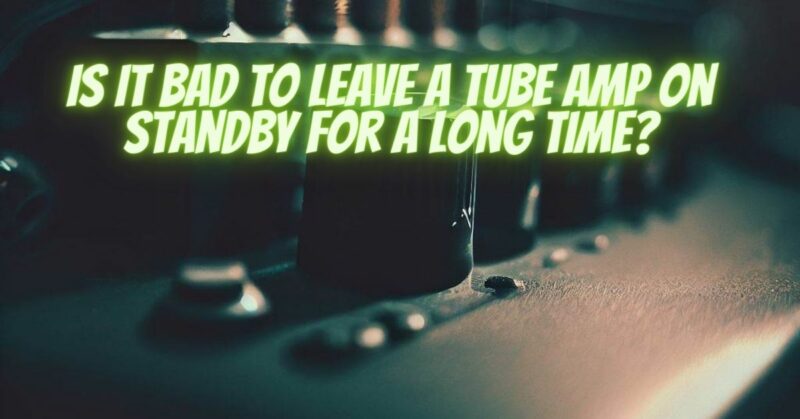The answer to this question is not entirely clear, as there is some debate among experts. Some people believe that it is perfectly fine to leave a tube amp on standby for a long time, while others believe that it can shorten the lifespan of the amp.
Here are some of the arguments in favor of leaving a tube amp on standby:
- It is convenient: If you are going to be using the amp again soon, it is more convenient to leave it on standby than to turn it off and then turn it back on again.
- It helps to prevent the tubes from going bad: When a tube amp is turned off, the tubes can cool down and condense moisture. This can eventually damage the tubes. Leaving the amp on standby helps to prevent this from happening.
Here are some of the arguments against leaving a tube amp on standby:
- It can shorten the lifespan of the amp: The standby mode still draws a small amount of power, which can slowly drain the battery or power supply. Additionally, the tubes in the amp may still be slightly warmed up, which can increase the risk of them being damaged.
- It can increase the risk of fire: If the amp is in a hot or humid environment, there is a greater risk of fire if it is left on standby.
Ultimately, the decision of whether or not to leave a tube amp on standby is up to you. There is no right or wrong answer, and the best way to find out what is safe for your amp is to consult with the manufacturer or a qualified technician.
If you do decide to leave your tube amp on standby, it is important to take some precautions to minimize the risk of damage:
- Make sure the amp is in a cool, dry environment: This will help to prevent the tubes from overheating or condensing moisture.
- Check the amp regularly: If you notice any unusual sounds or smells coming from the amp, turn it off immediately.
- Have the amp serviced regularly: This will help to identify and fix any potential problems before they cause damage to the amp.


